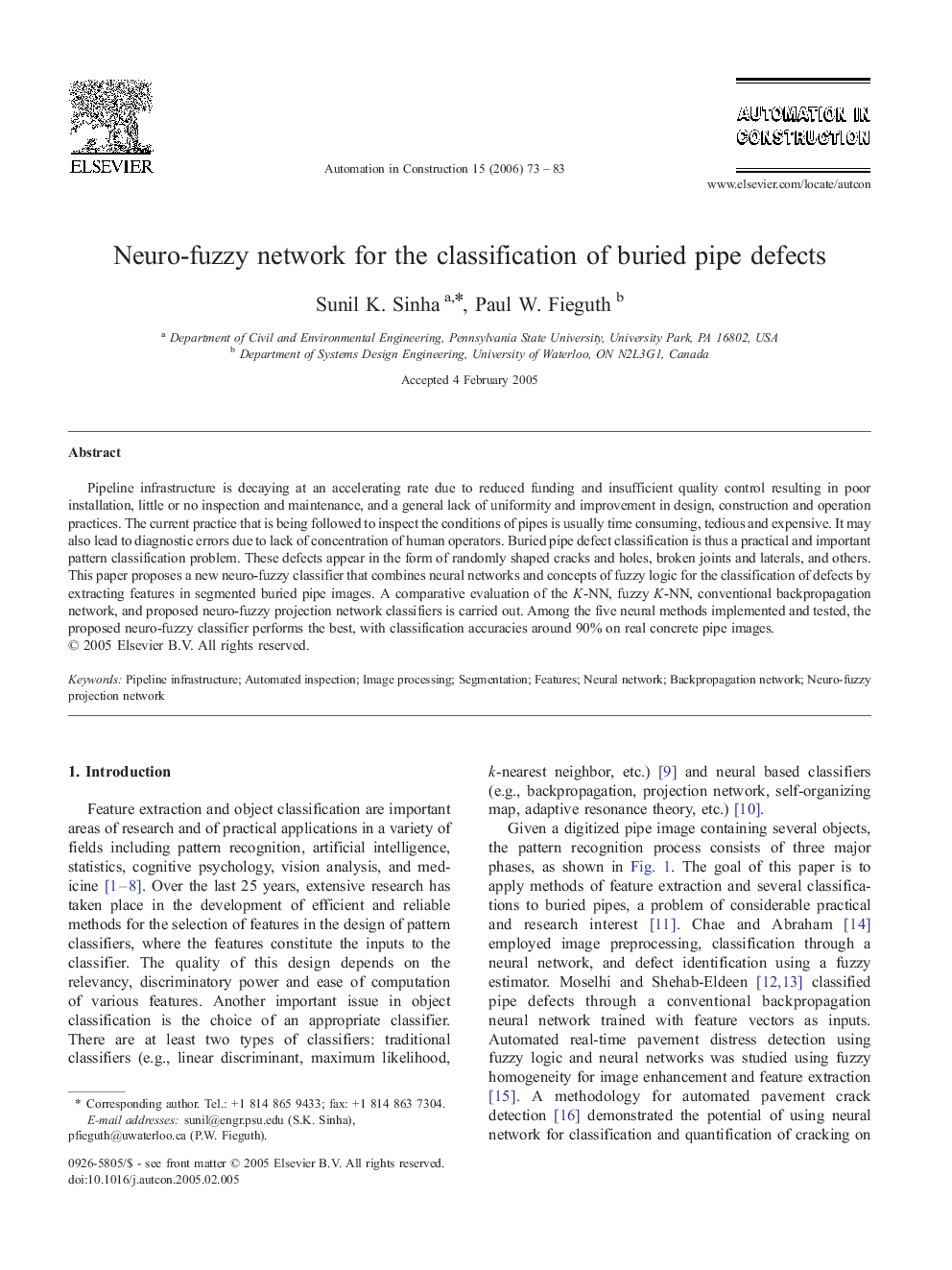| Article ID | Journal | Published Year | Pages | File Type |
|---|---|---|---|---|
| 247609 | Automation in Construction | 2006 | 11 Pages |
Pipeline infrastructure is decaying at an accelerating rate due to reduced funding and insufficient quality control resulting in poor installation, little or no inspection and maintenance, and a general lack of uniformity and improvement in design, construction and operation practices. The current practice that is being followed to inspect the conditions of pipes is usually time consuming, tedious and expensive. It may also lead to diagnostic errors due to lack of concentration of human operators. Buried pipe defect classification is thus a practical and important pattern classification problem. These defects appear in the form of randomly shaped cracks and holes, broken joints and laterals, and others. This paper proposes a new neuro-fuzzy classifier that combines neural networks and concepts of fuzzy logic for the classification of defects by extracting features in segmented buried pipe images. A comparative evaluation of the K-NN, fuzzy K-NN, conventional backpropagation network, and proposed neuro-fuzzy projection network classifiers is carried out. Among the five neural methods implemented and tested, the proposed neuro-fuzzy classifier performs the best, with classification accuracies around 90% on real concrete pipe images.
